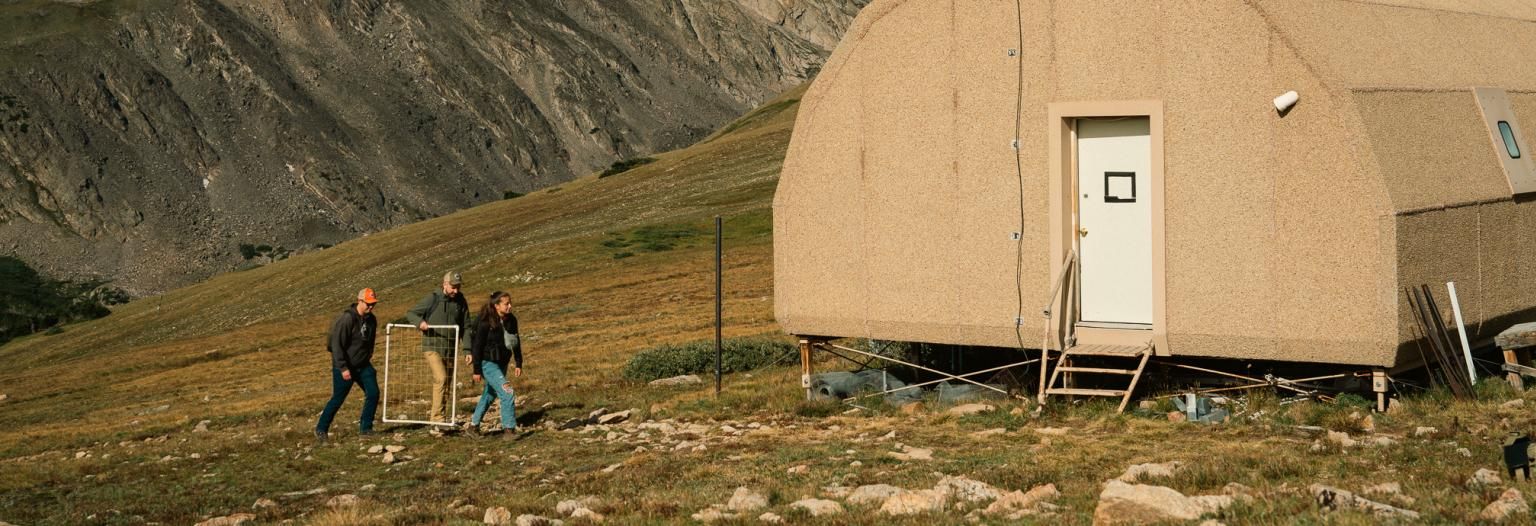
Dear Latrice,
We also love...
Aaron | Denver, CO
Which is why we’ve been studying and preserving it for more than 100 years through the Mountain Research Station.
Campus Location

Under a clear blue sky, 50 undergraduates from the University of Colorado Boulder spent their Saturday atop a mountain, studying grasshoppers in plastic cages designed to test their responses to various types of vegetation.
The students trekked a rugged path to Elk Meadow, nearly 10,000 feet above sea level, to explore CU Boulder’s Mountain Research Station—a premier site for long-term alpine research. Located just north of Nederland, this is CU Boulder’s highest facility and is renowned for its extensive studies on wildfire effects, alpine wildlife, and soil changes. While graduate students frequently visit, this was a rare opportunity for undergraduates to experience the station firsthand.
“We want undergrads to see the research opportunities and get involved,” says Warren Sconiers, associate teaching professor in the Department of Ecology and Evolutionary Biology (EBIO) at CU Boulder and trip organizer.
Since 1920, the Mountain Research Station has been a cornerstone of alpine research and education. Originally known as Science Lodge and Science Camp, it is equipped with classrooms, offices, and living spaces essential for studying alpine ecosystems.
The station’s distinguished reputation is largely attributed to its dedicated staff and the leadership of John Marr, who directed it from 1950. Marr established pivotal programs like the Mountain Climate Program and the Niwot Ridge Long-Term Ecological Research (LTER) program. Funded by the National Science Foundation, the LTER program focuses on alpine environments and has been continuously supported since 1980.
The Mountain Climate Program, created to study climate impacts on Front Range ecosystems, holds the longest continuous greenhouse gas record in the continental U.S., second only to Mauna Loa in Hawaii. Current director Scott Taylor emphasizes, “The long-term data collected here is invaluable for understanding climate and ecosystem changes.”
“We wouldn’t have achieved half of what we’ve done without Marr’s contributions,” says former director Bill Bowman. Taylor agrees, noting, “The Mountain Research Station is really unique. Many research stations exist, but few have such a rich history.”
By bringing his general biology students to the station, Professor Warren Sconiers aims to connect them with this exceptional resource. “The goal of the trip is to introduce students to faculty research and show them the opportunities available,” Sconiers explains. “Even a simple interest can lead to meaningful involvement.”
Taylor, aiming to enhance the station's visibility and inclusiveness, adds, “There’s the scientific legacy of the station, but there’s also one inspiring new generations to care about alpine and mountain ecosystems. “That’s partially why I love field stations. They have such a big impact.”

